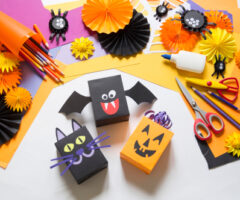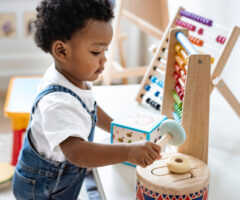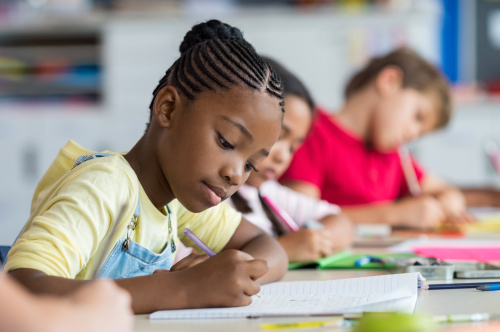 The holiday season and changing seasons provide perfect opportunities to engage children in creative art activities that celebrate the festive spirit and the beauty of nature. Whether you’re a teacher looking for engaging classroom activities or a parent wanting to spend quality time with your children at home, this blog post offers creative ideas to celebrate holidays and seasons through art.
The holiday season and changing seasons provide perfect opportunities to engage children in creative art activities that celebrate the festive spirit and the beauty of nature. Whether you’re a teacher looking for engaging classroom activities or a parent wanting to spend quality time with your children at home, this blog post offers creative ideas to celebrate holidays and seasons through art.
1. Festive Collage:
Encourage children to create festive collages using colorful construction paper, old magazines, and other craft materials. For example, for Christmas, they can cut out images of gifts, trees, and Santa Claus from magazines, and using glue, create a delightful collage. To make it more interactive, you can ask children to write holiday wishes or thoughts on their collages. This activity not only encourages creativity but also helps children develop fine motor skills and visual learning.
2. Nature-Inspired Leaf Stamping:
As the seasons change, take advantage of nature’s beauty by using leaves as stamps. Collect leaves of different shapes and sizes and dip them into washable paint or ink. Then, press the painted leaves onto paper to create beautiful leaf prints. Children can experiment with different colors and create patterns using various leaves. This activity not only encourages creativity but also introduces children to the wonders of nature and the changing seasons.
3. Paper Plate Masks:
Get into the spirit of Halloween or any other costume-oriented holiday by creating paper plate masks. Provide children with paper plates, markers, crayons, and craft materials like feathers, glitter, and googly eyes. Encourage them to design their own masks and bring their imaginative characters to life. Once the masks are ready, children can have fun putting on a play or a mini-festival, showcasing their creative masks and their storytelling skills.
4. Seasonal Landscape Art:
Capture the beauty of each season through landscape art activities. Provide children with different art materials like watercolors, pastels, or colored pencils. encourage them to create a landscape that represents the current season. For example, in the spring, they can paint blooming flowers and budding trees, while in winter, they can use white and blue hues to depict a snowy landscape. This activity not only develops artistic skills but also enhances children’s observation and understanding of the seasonal changes.
5. Handprint Art:
Handprint art is a classic activity that can be adapted to celebrate different holidays or seasons. Children can dip their hands in non-toxic paint or use washable ink pads to make handprints on paper or fabric. Then, they can transform the handprints into different characters or objects related to the holiday or season. For example, for Thanksgiving, they can turn their handprints into turkeys, or for spring, they can create colorful flowers using their handprints. This activity is not only enjoyable but also provides a tangible keepsake of the holiday or season.
Conclusion
Engaging in holiday and seasonal art activities allows children to embrace their creativity, learn about different occasions, and appreciate the beauty of nature. Whether it’s creating festive collages, exploring leaf stamping, making paper plate masks, painting seasonal landscapes, or enjoying handprint art, these activities provide educational and imaginative experiences for children. Remember, the process is just as important as the end result, so encourage children to explore and experiment with materials and techniques. By incorporating art into the commemoration of holidays and seasons, you can create lasting memories and foster a love for artistic expression.
Contact Us Today!
If you’re looking for additional art activities or professional guidance in incorporating art into your children’s lives, consider reaching out to us here at Kids Kingdom Early Learning Center. We provide a wide range of resources, ideas, and workshops to inspire and support creative expression in children. Let us help you create unforgettable artistic experiences! Contact us today to learn more!
 Art and creativity play a crucial role in early education, providing children with a multitude of benefits that shape their cognitive, emotional, and social development. In this blog post, we will explore the significance of art in early education and how it contributes to the holistic growth of children.
Art and creativity play a crucial role in early education, providing children with a multitude of benefits that shape their cognitive, emotional, and social development. In this blog post, we will explore the significance of art in early education and how it contributes to the holistic growth of children.
Cognitive Development
Engaging in artistic activities, such as drawing, painting, and sculpting, stimulates various cognitive processes in young children. Through art, children learn to observe, interpret, and analyze the world around them. Creating art enhances their problem-solving skills, as they experiment with different materials, colors, and techniques to achieve their desired results. Furthermore, art helps develop critical thinking skills by encouraging children to think creatively and develop unique solutions.
Art also supports the development of fine motor skills as children manipulate materials and tools. This strengthens hand-eye coordination and improves their ability to control and manipulate objects. Additionally, engaging in artistic activities enhances spatial awareness and visual perception, as children learn to represent objects, people, and scenes in two- and three-dimensional forms.
Emotional Development
Art provides a platform for children to express themselves and explore their emotions in a safe and supportive environment. Through art, children can freely express their thoughts, feelings, and experiences, even those that are difficult to put into words. This creative outlet helps children process and cope with their emotions, facilitating emotional growth and resilience. Art also encourages self-reflection, enabling children to explore and understand their own identities, strengths, and weaknesses. It promotes self-esteem and confidence as children see their creations come to life, fostering a sense of accomplishment and pride in their abilities.
Moreover, art allows children to develop empathy and emotional intelligence. As they create and interpret art, they gain a deeper understanding of the emotions and experiences of others. This cultivates empathy and compassion, enabling children to connect with and relate to diverse perspectives and cultures. Art also encourages communication and dialogue, as children discuss their artistic creations and share their thoughts and feelings with their peers and teachers.
Social Development
Art provides numerous opportunities for collaboration and social interaction, fostering important social skills in young children. Group art projects encourage children to work together, negotiate, and compromise, promoting teamwork and cooperation. Collaborative art experiences also build a sense of community and belonging, as children learn to appreciate and value the contributions of others. Through art, children develop important social skills such as listening, taking turns, and resolving conflicts.
Art also serves as a universal language, connecting children from different backgrounds and cultures. By engaging in artistic activities that reflect their own cultural heritage and those of their peers, children gain a greater appreciation for diversity and develop an understanding and respect for different traditions and perspectives.
Conclusion
Art and creativity are integral components of early education, providing children with valuable opportunities to enhance their cognitive, emotional, and social development. Through artistic activities, children develop cognitive skills such as problem-solving, critical thinking, and fine motor coordination. Art also fosters emotional growth by providing a means for self-expression and self-reflection. Furthermore, collaborative art experiences promote important social skills like teamwork, communication, and empathy. By recognizing the significance of art in early education and incorporating it into the curriculum, educators can support the holistic growth of children and provide them with a solid foundation for future learning and success.
Got Questions? Let Us Help!
Established in 2017, Kids Kingdom Early Learning Center is a child care and learning center located in Greenwood, Indiana. We specialize in providing a variety of services including daily nondenominational Christian education, before care and aftercare services, Paths to QUALITY™ Level 3 provider, On My Way Pre-K Provider, director-led weekly Bible learning time, military discounts, available through NACCRRA, Kindergarten readiness, CCDF provider, and more for children from newborn to 6 years old. As a family-owned and operated business, we value providing Christian education and quality services. Contact us for more information or come visit us today!
The Relationship Between Religion And Education
Religion and education, two of the world’s most ancient endeavors, have a long relationship. Historians and social scientists have written about this relationship and about how the cultural norms and doctrines of a religious group may affect educational attainment.
Religious Education
Religious education teaches us to be responsible in a variety of ways. It helps students make wise choices, learn the rules of conduct and understand that their actions can have an effect on others. In particular, it teaches students to be responsible with their money. It explains how to budget for their needs and wants, as well as for those of others. Religion and education also teaches students to be responsible in an environmental sense. For example, it explains why it is important to protect the earth’s resources and how this can improve the quality of life for future generations. The best way to teach these lessons is through a curriculum that incorporates the most effective strategies for teaching moral lessons and enhancing social awareness and responsibility. This can be achieved through the use of interactive learning techniques, which can help students develop a better understanding of how their actions affect other people and the environment.
Living A Moral Life
Religion and education is a process of learning to live a moral life. It teaches us about the different ideas and principles that take us towards a good life and help us identify the bad ones. It helps us to develop a sense of right and wrong in our lives, and this is important for both personal growth and living in society. It also instills values that promote pro-social behavior such as empathy and compassion. Religious people have higher self-esteem and better psychological adjustment than nonreligious people, according to a January 2012 study. They also have a stronger belief in divine commands and the role of God, which makes them more likely to do the right thing.
Integrating Religion In Classrooms
Religion is often a source of social conflict. However, it is also a major component of education that helps to solve many problems in a society. It promotes equality, cooperation, peace, happiness, and appreciation for others. It also helps in preventing crime and anti-social activities. Studies have shown that Religion and education are not mutually exclusive, but can be integrated in a classroom setting to teach students important facts about different belief systems. For instance, exposing students to texts from different religions can help them learn about history, politics, and culture. It also can encourage students to think critically, appreciate other cultures, and exercise empathy. Similarly, studying historical conflicts and the reasons behind them can help students better understand why disagreements occur and how to mitigate them. In addition, students may even be able to use these skills when faced with real life situations. Lastly, teaching about religion can help students develop social skills that will be essential in a multicultural world.
Making The Right Decisions
When it comes to making decisions about their future, teens need to have a strong foundation of values and beliefs. This is where religion and education can help them. In our society, religion has a large impact on the moral fabric of our communities and can play an important role in preventing crime and anti-social activities. It is also a source of education, teaching us to respect the diversity of others and their world views. Research has shown that a child who grows up with a strong foundation in their faith is more likely to have successful marriages, be happier and experience greater emotional stability. This is why many parents wish to provide a strong religious foundation to their children. The benefits of this are numerous, and it is a gift that can last a lifetime. If you are interested in helping your child develop a strong faith base, please contact Kids Kingdom Early Learning Center today!
Use Kind Words
Parents can help their kids develop positive attitudes by teaching them to be kind. One way to do this is by pointing out all the good things their kids do. This can include helping out at home, doing a service project at school, or even doing something for their friends. Using specific language to praise children also helps them feel more valued and encourages them to try harder next time.
Say Thank You And Please
Practicing good manners is crucial in helping your child develop the social skills that will take them far in life. Taking the time to say “please” and “thank you” is a great way to let others know that they are valued. And we understand that teaching children to be kind takes time and patience, but it is something that they will surely benefit from later in life. The key is to have realistic expectations for them and to keep modeling the correct behavior. For example, if your child receives a treat from grandparents or aunties, tell them that it’s important to say thank you. They’ll soon get the hang of it.
Understanding That Kindness Is Contagious
When people see other people doing kind things, they’re more likely to do kind things themselves. This is known as the “moral elevation” effect and it makes us want to be more altruistic. The feeling of moral elevation is a natural, warm-and-fuzzy-on-the-inside sensation that helps explain why kindness is so contagious. Believe it or not, kids are hardwired to be empathetic and want to help others. Teaching children to be kind and empowering them to do their part can make a huge difference in the world.



 The holiday season and changing seasons provide perfect opportunities to engage children in creative art activities that celebrate the festive spirit and the beauty of nature. Whether you’re a teacher looking for engaging classroom activities or a parent wanting to spend quality time with your children at home, this blog post offers creative ideas to celebrate holidays and seasons through art.
The holiday season and changing seasons provide perfect opportunities to engage children in creative art activities that celebrate the festive spirit and the beauty of nature. Whether you’re a teacher looking for engaging classroom activities or a parent wanting to spend quality time with your children at home, this blog post offers creative ideas to celebrate holidays and seasons through art. Art and creativity play a crucial role in early education, providing children with a multitude of benefits that shape their cognitive, emotional, and social development. In this blog post, we will explore the significance of art in
Art and creativity play a crucial role in early education, providing children with a multitude of benefits that shape their cognitive, emotional, and social development. In this blog post, we will explore the significance of art in